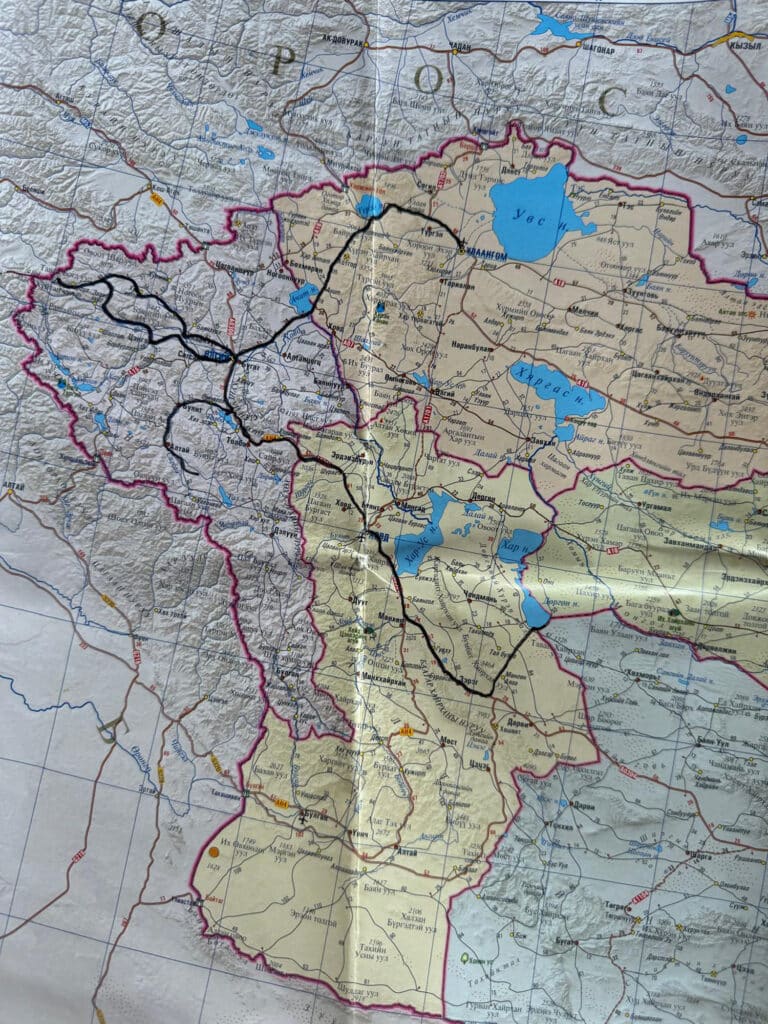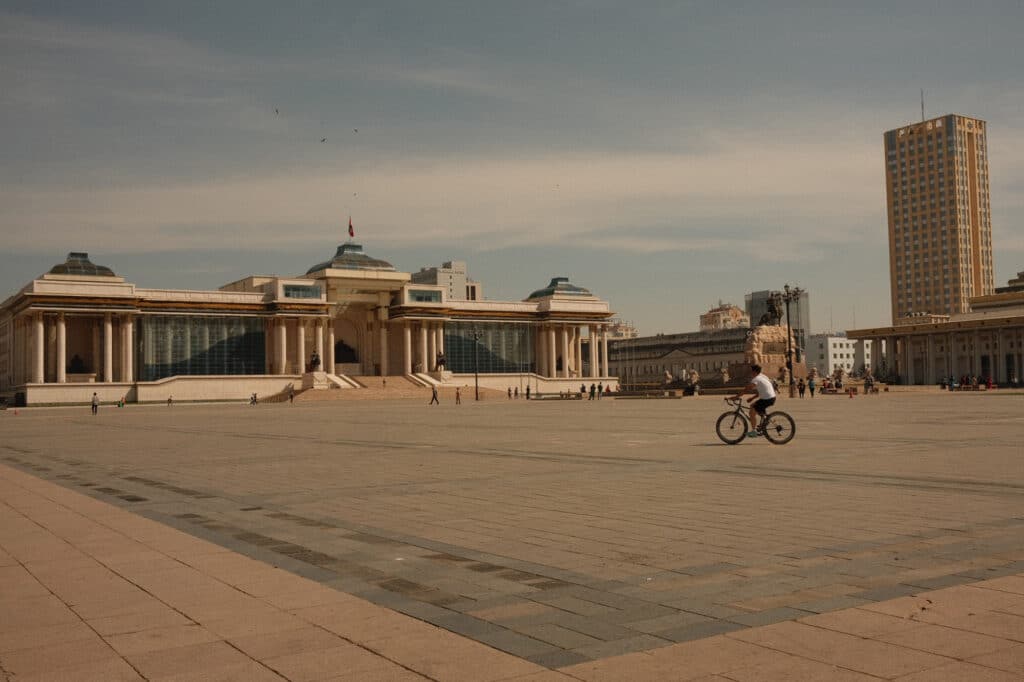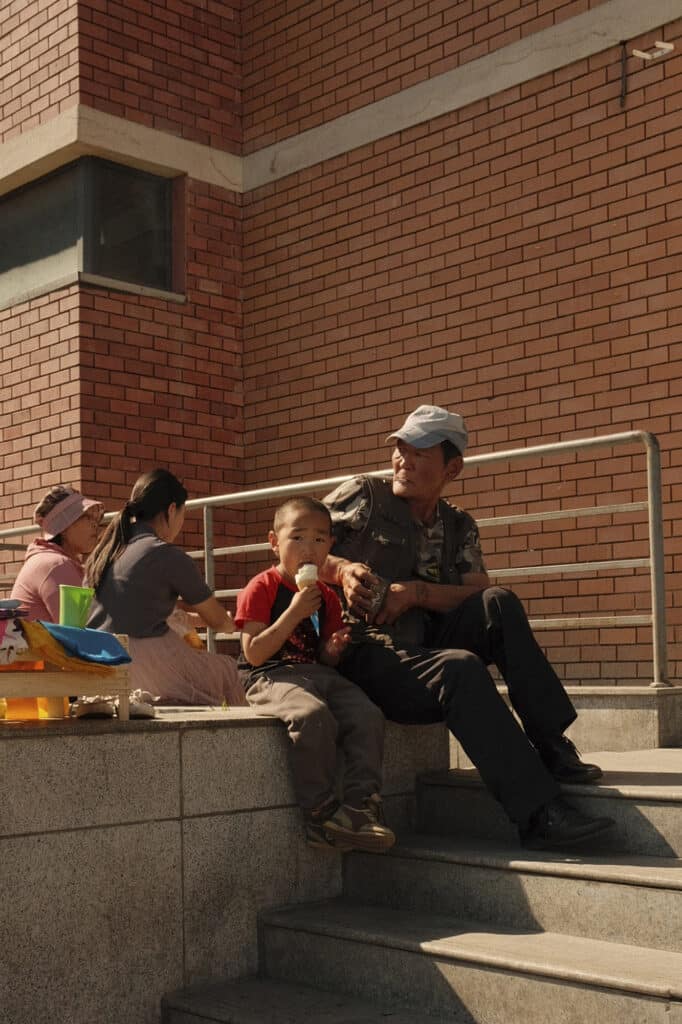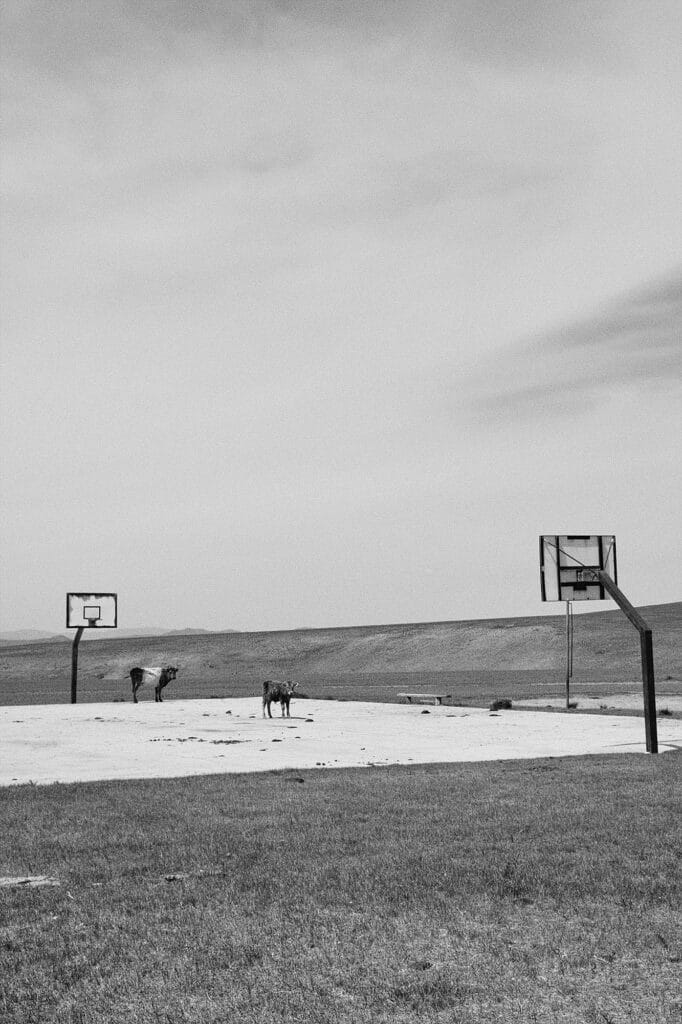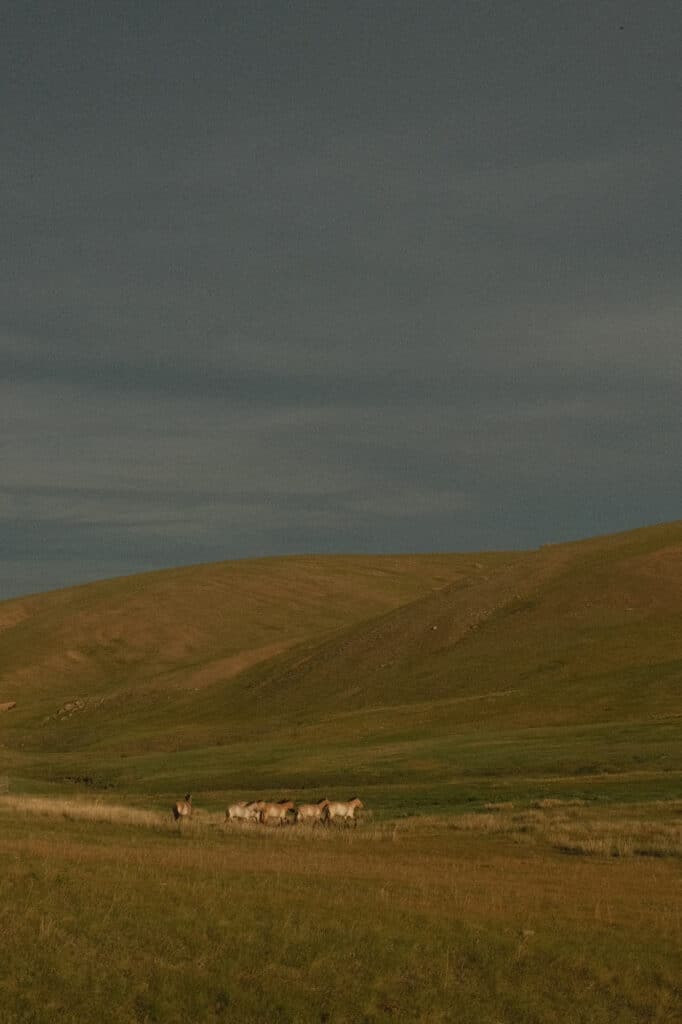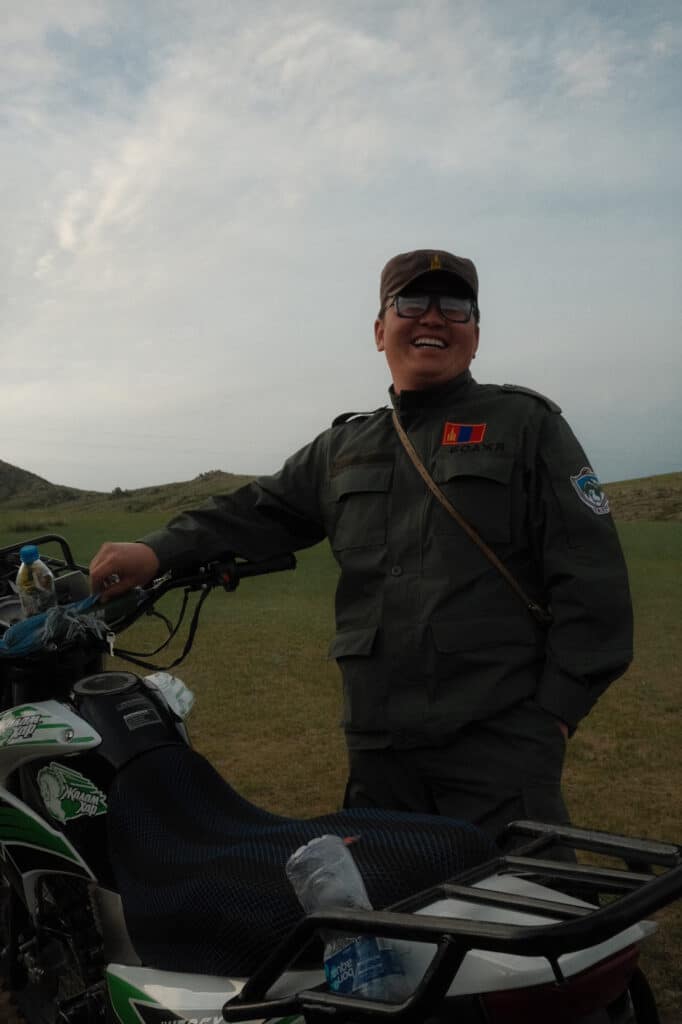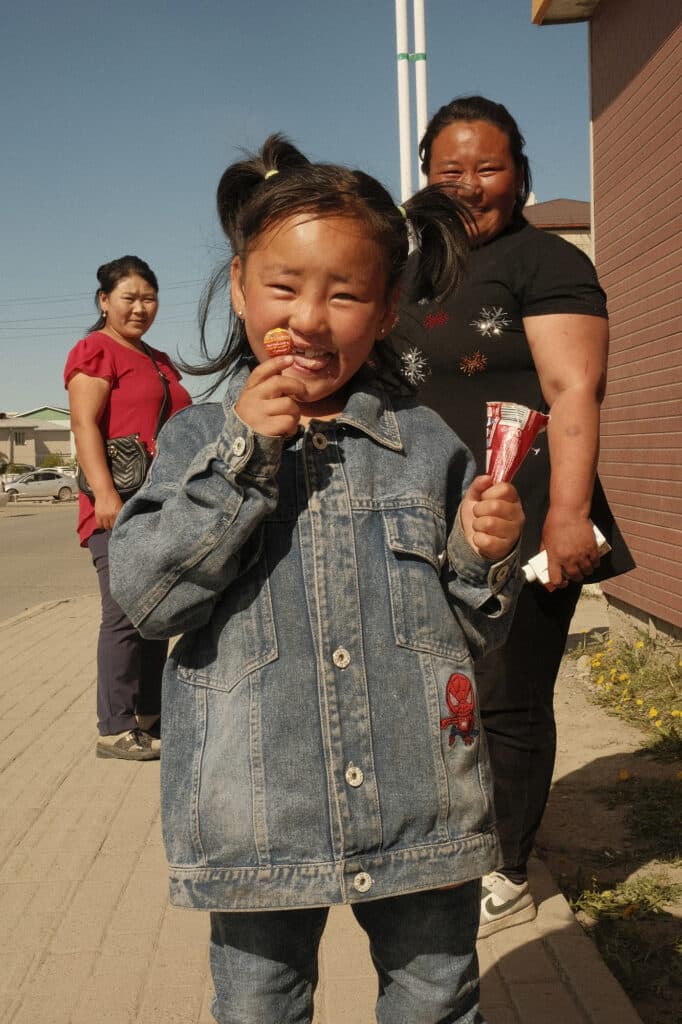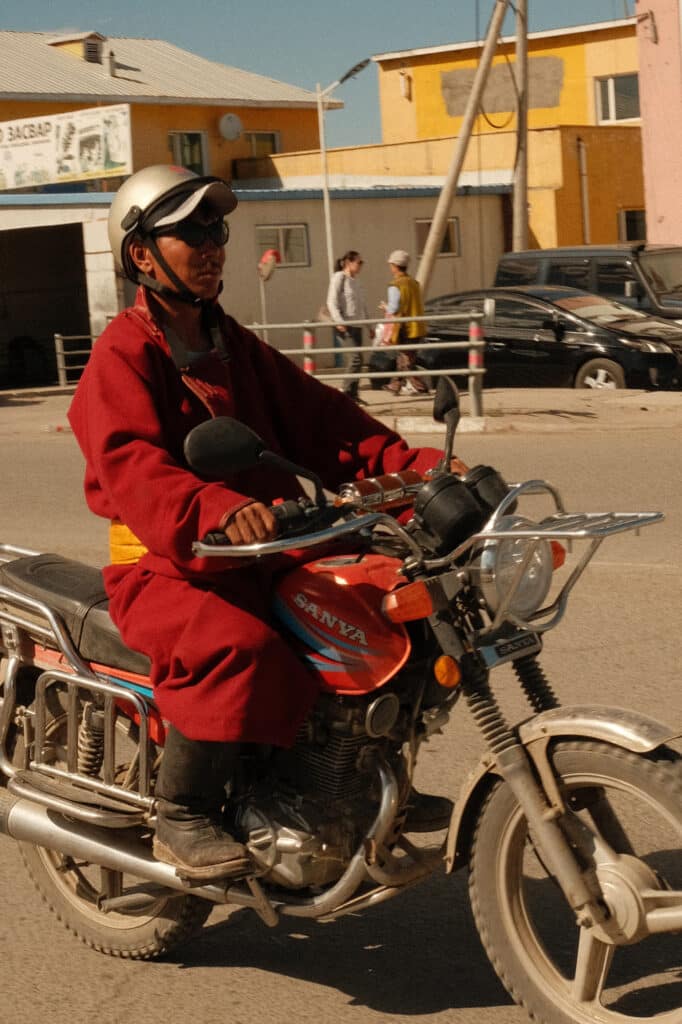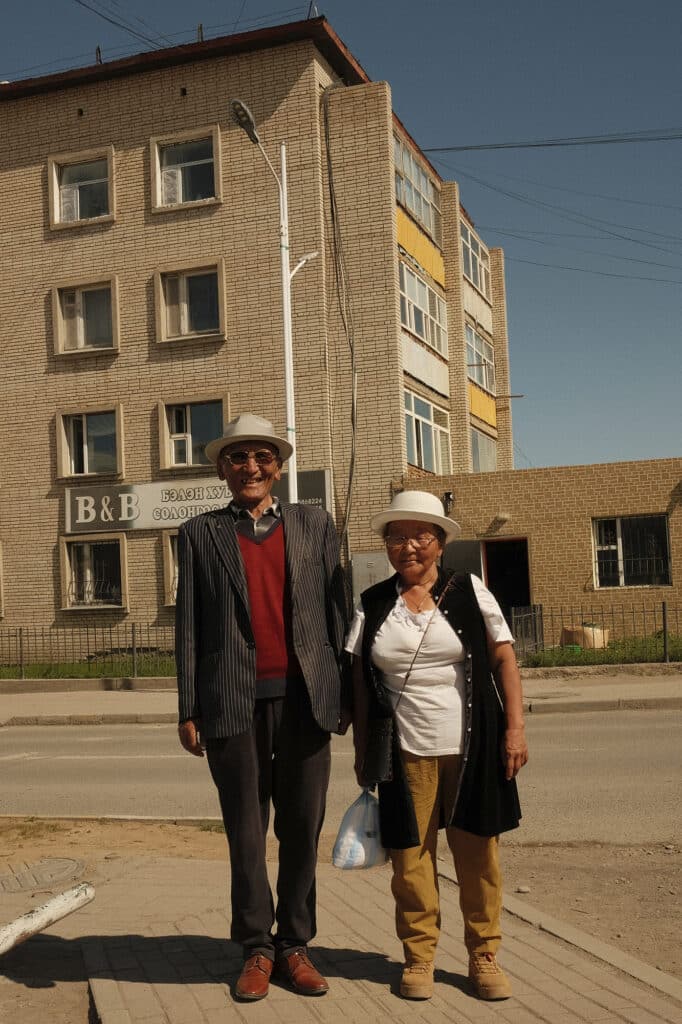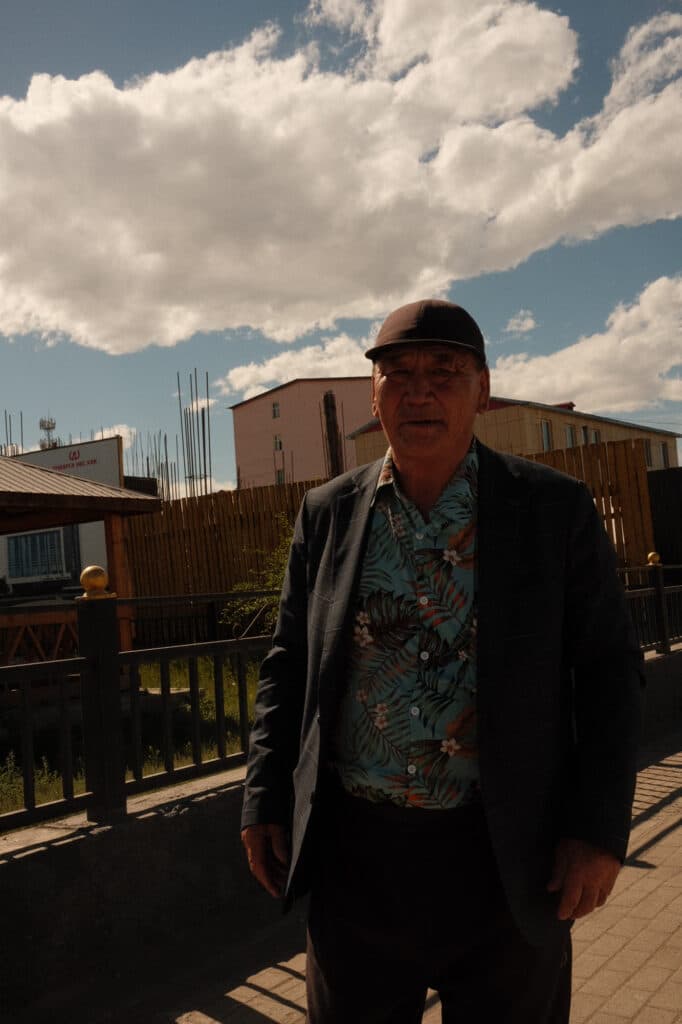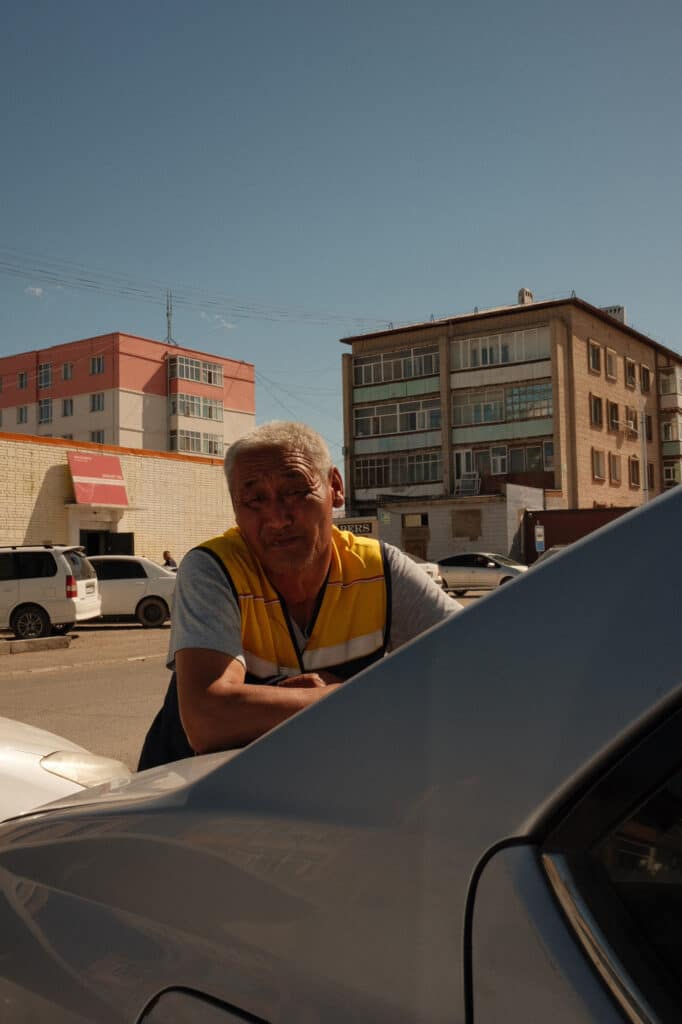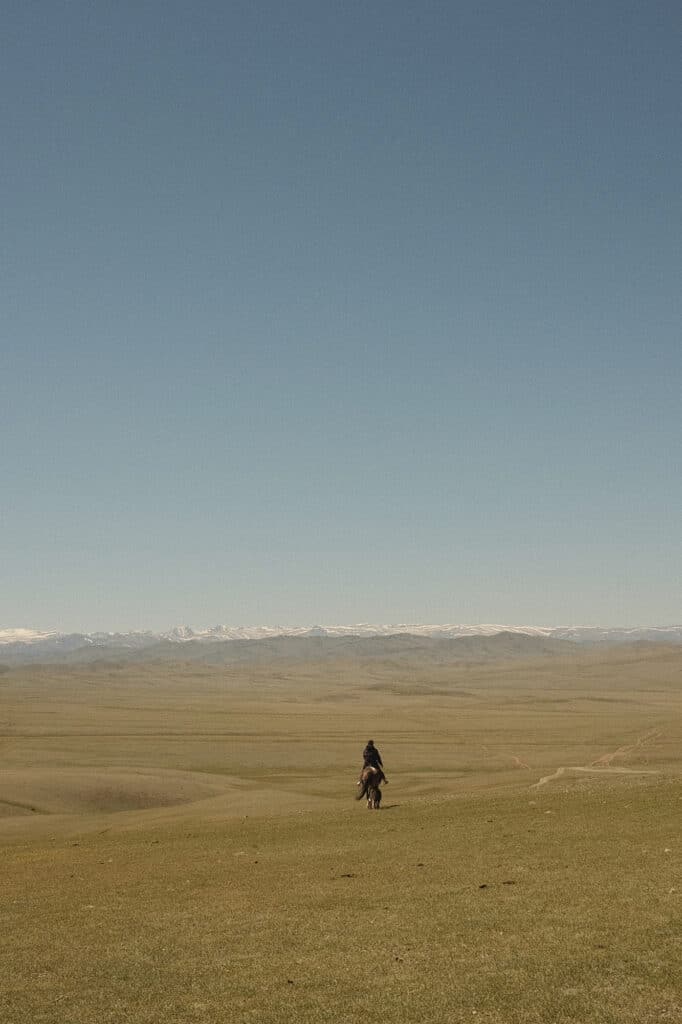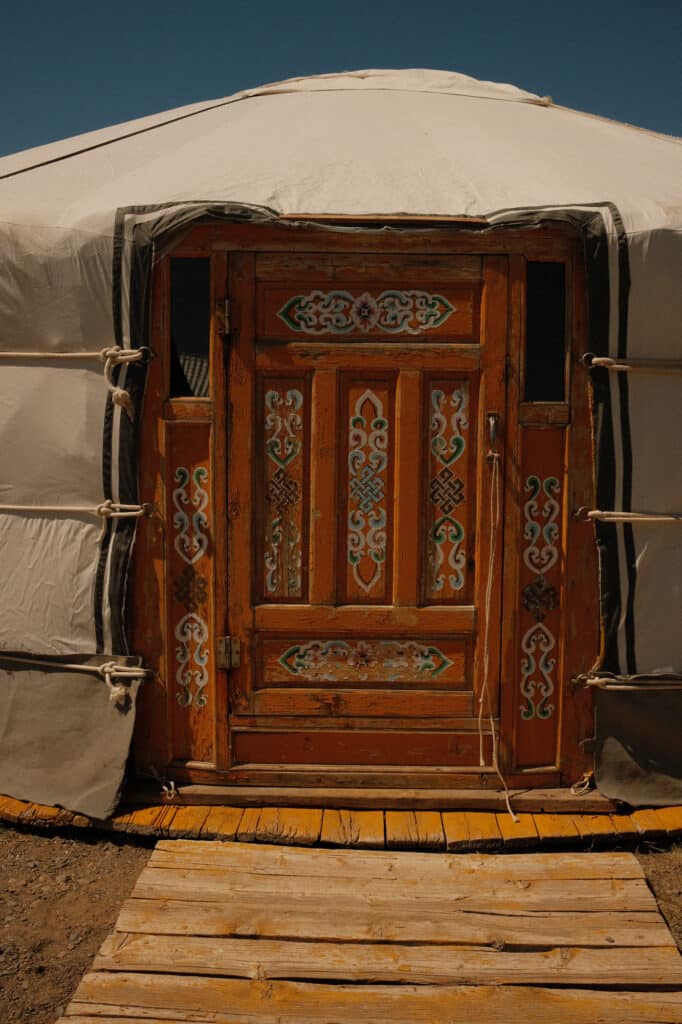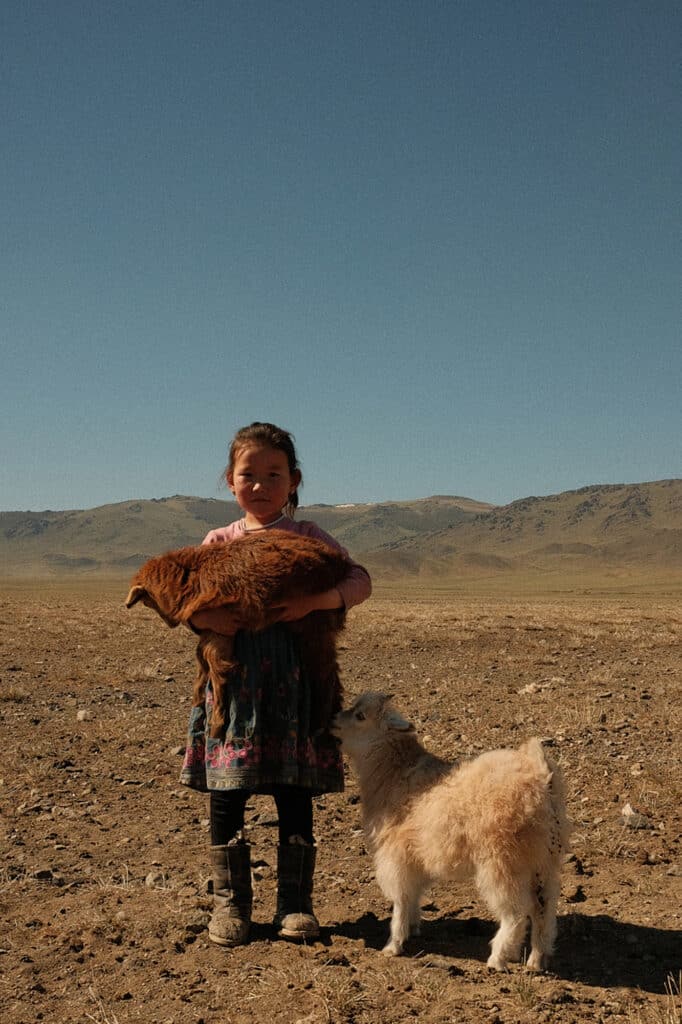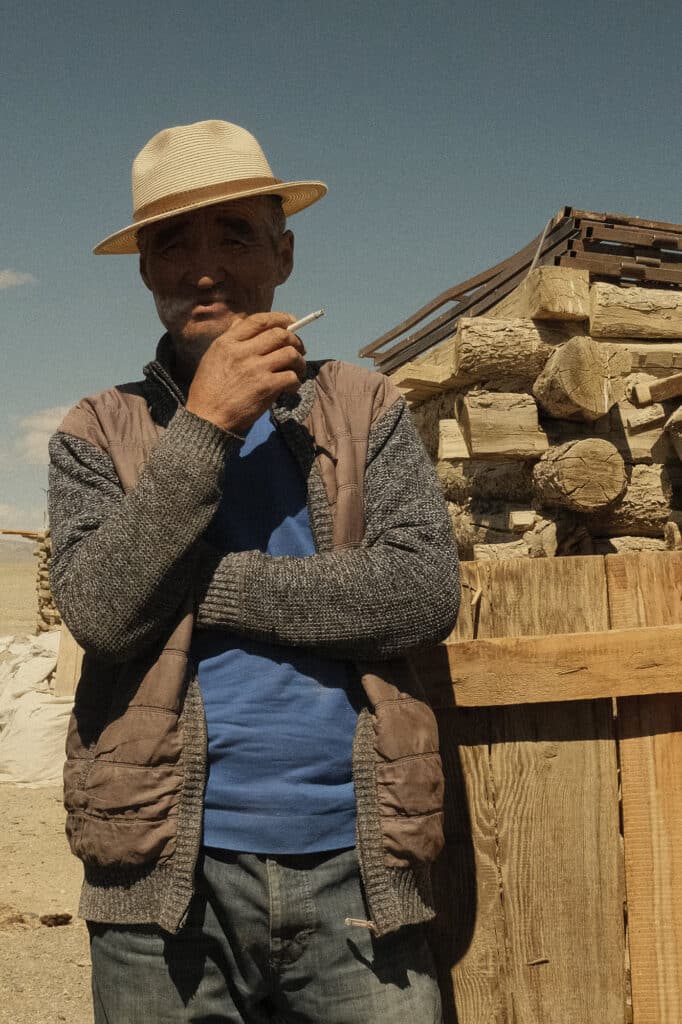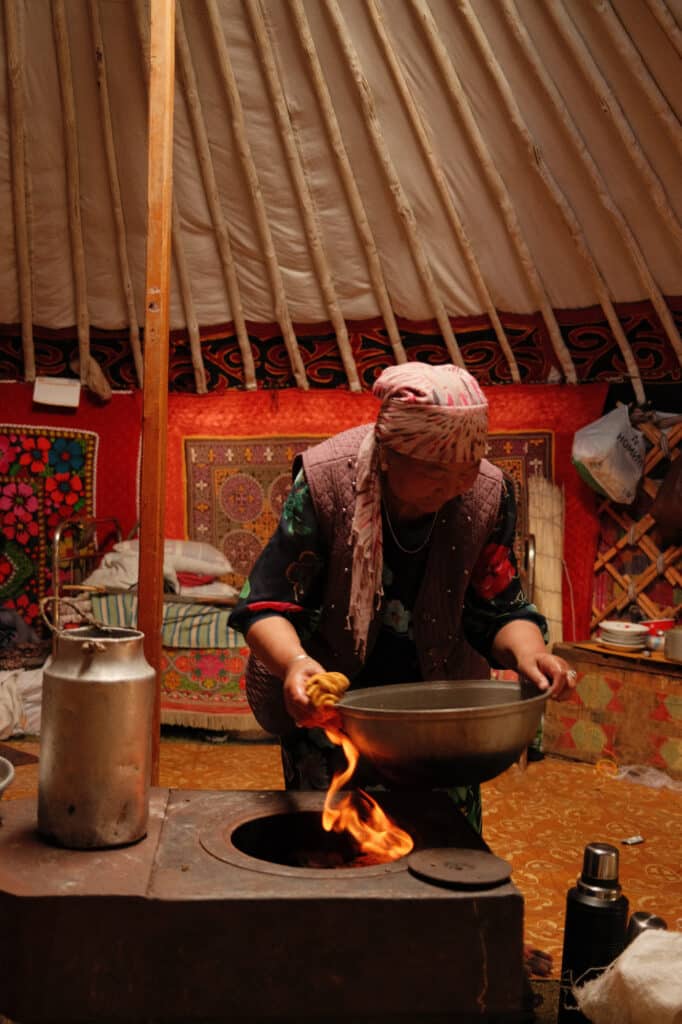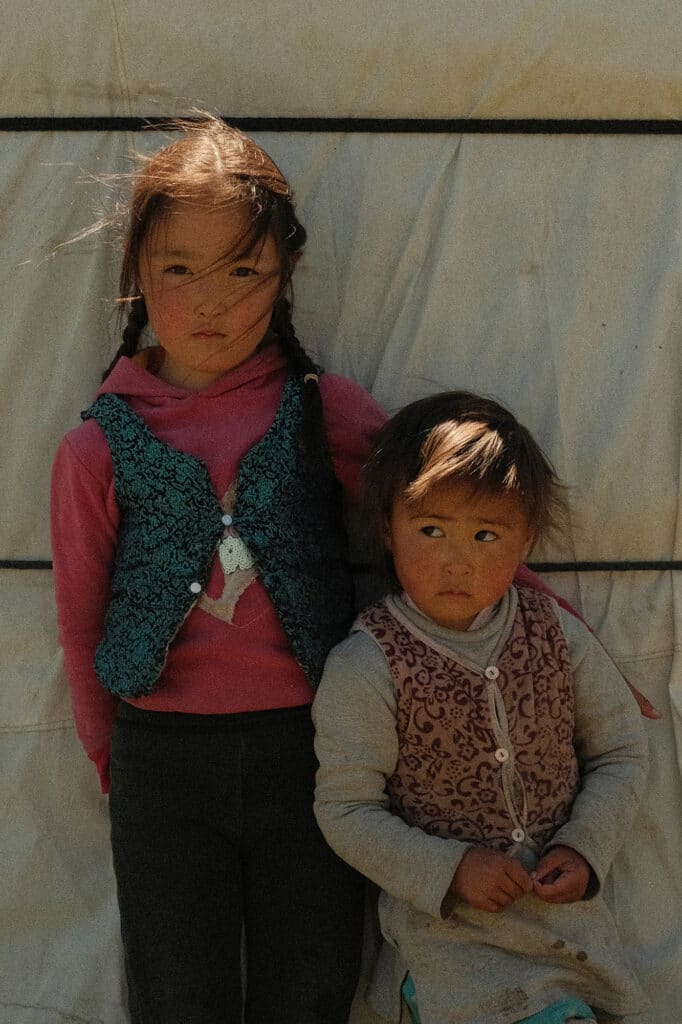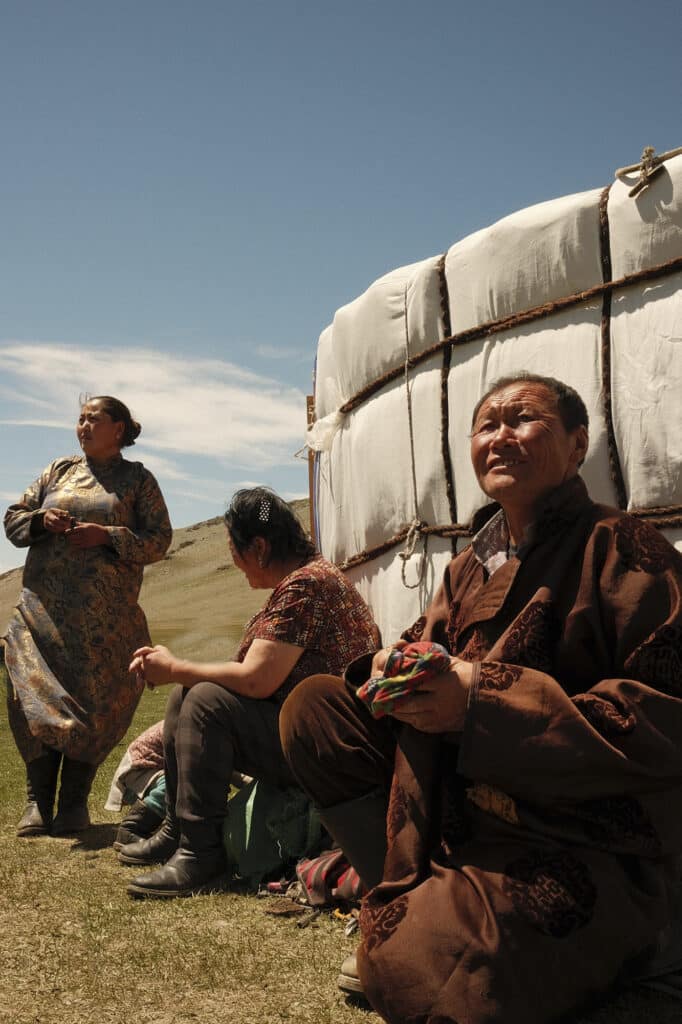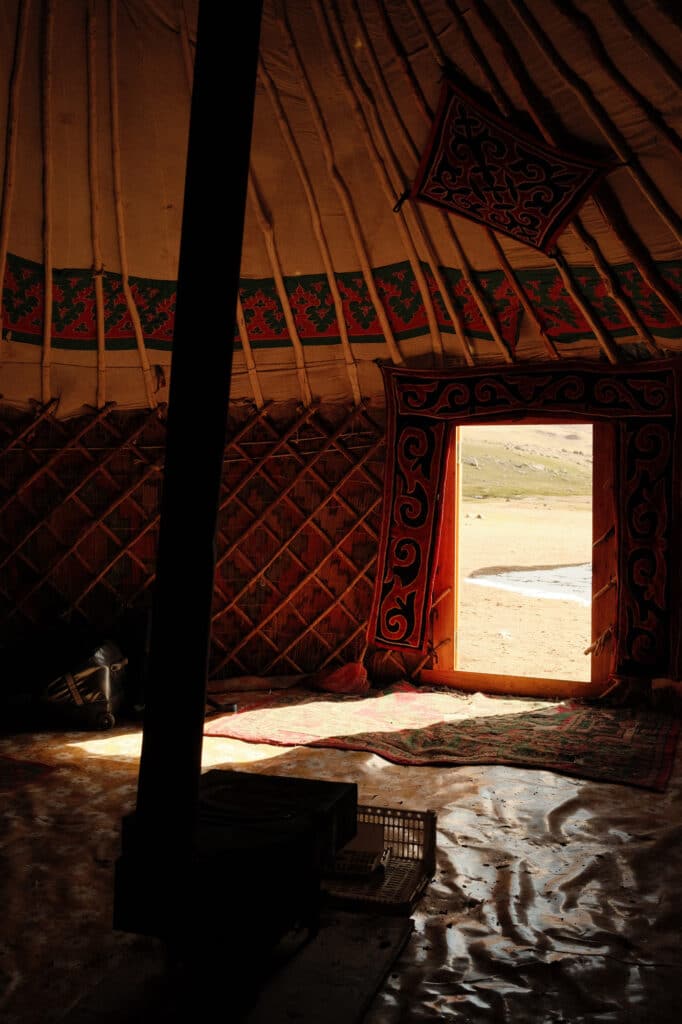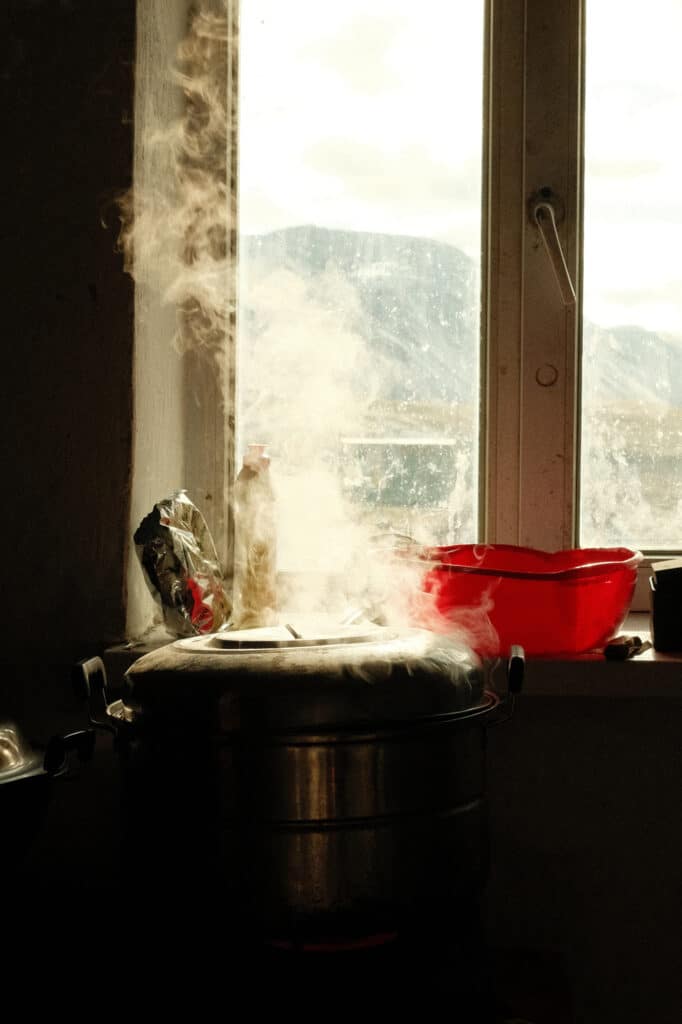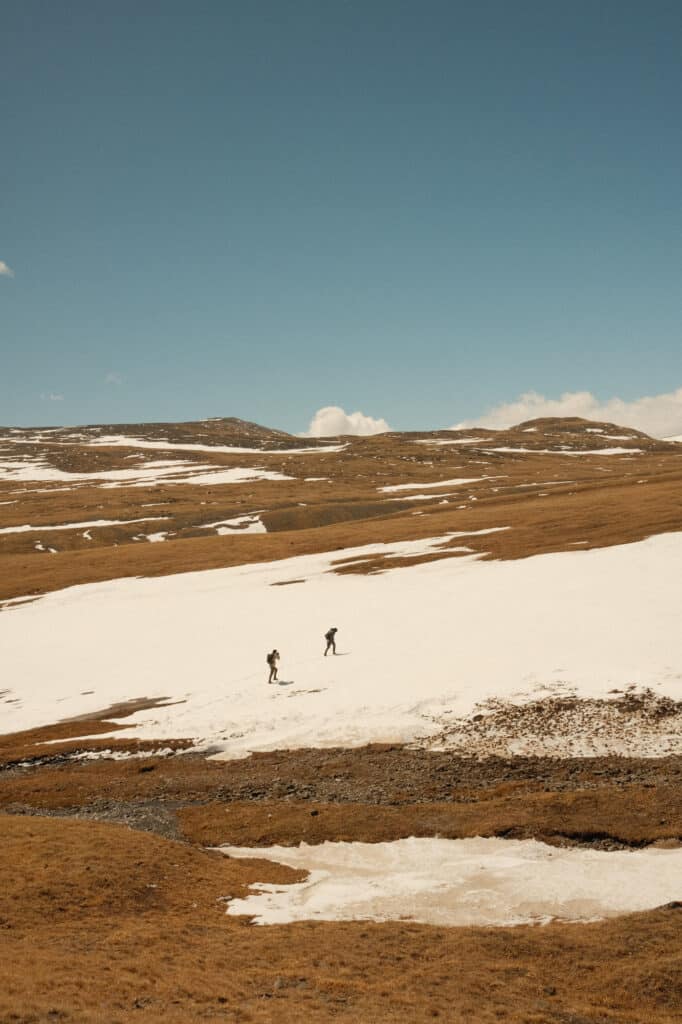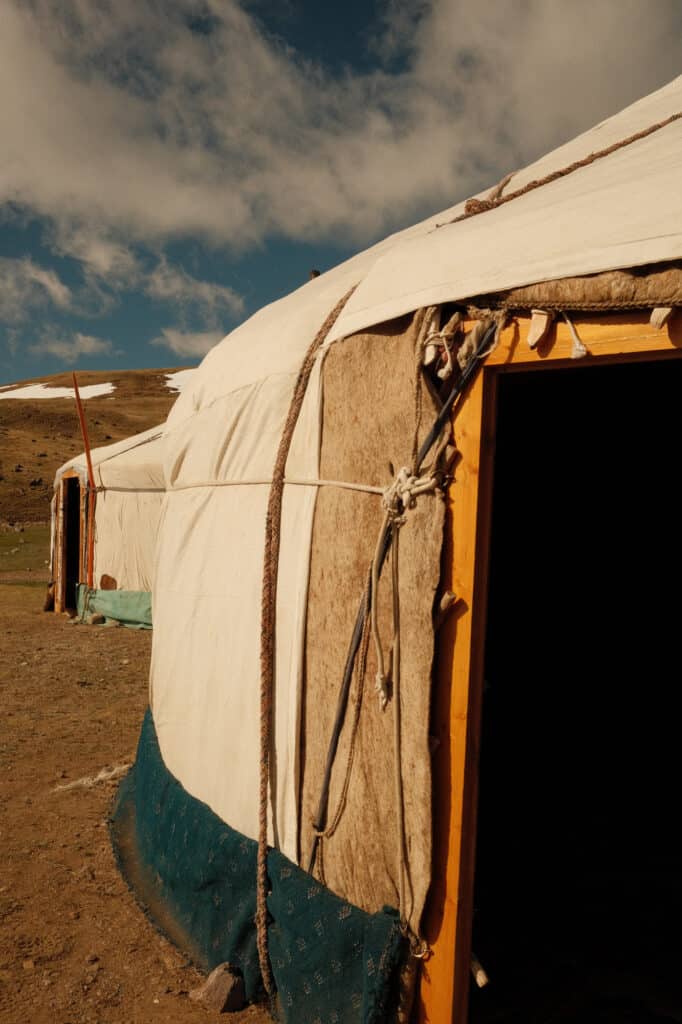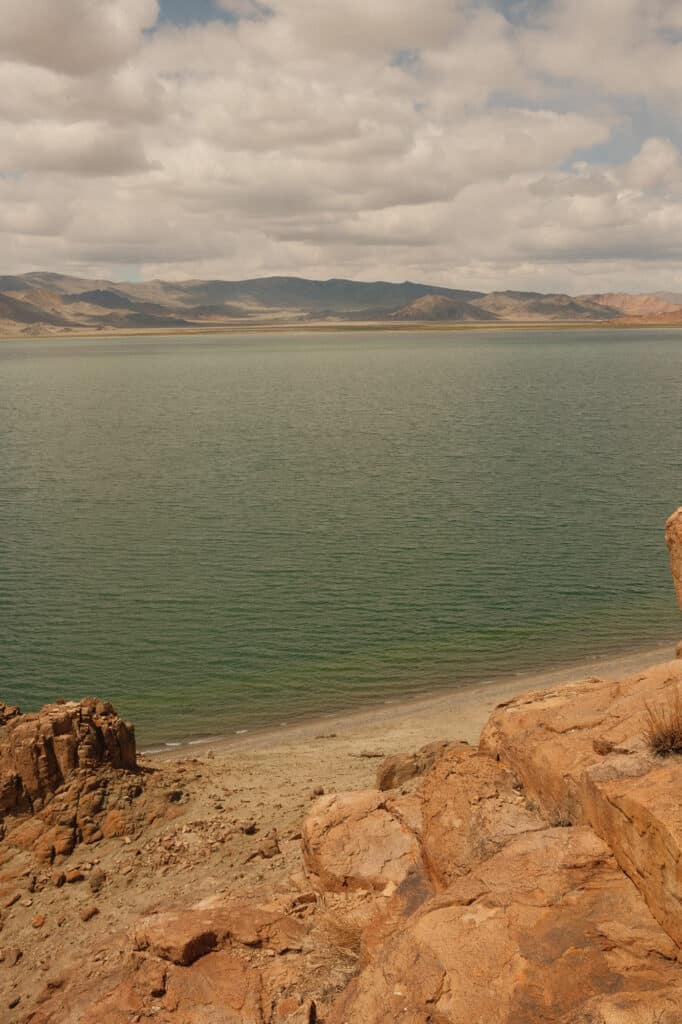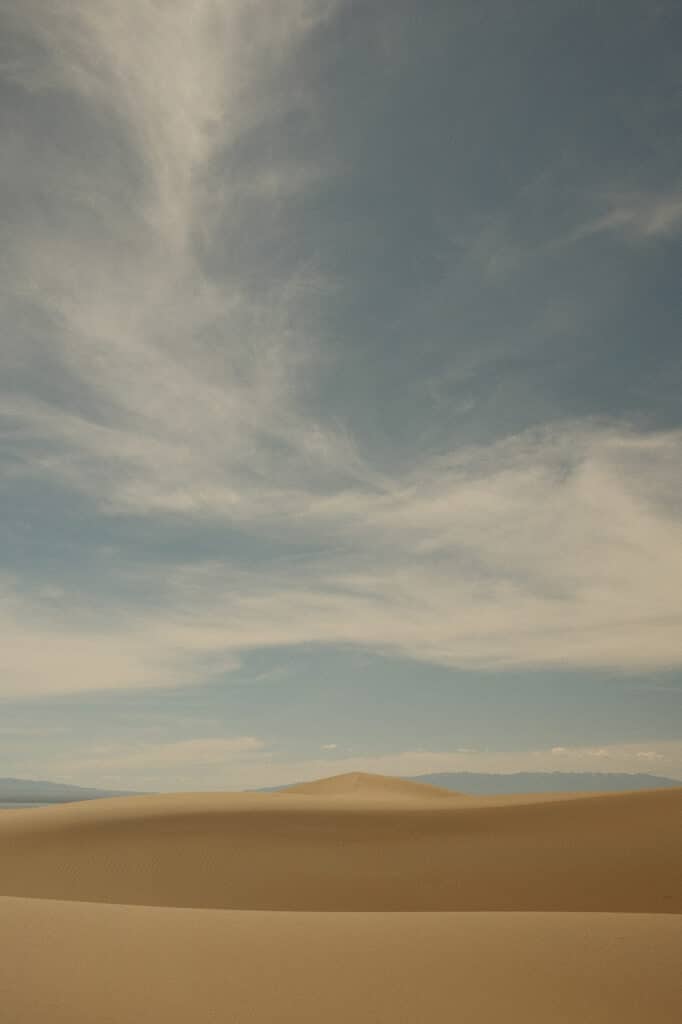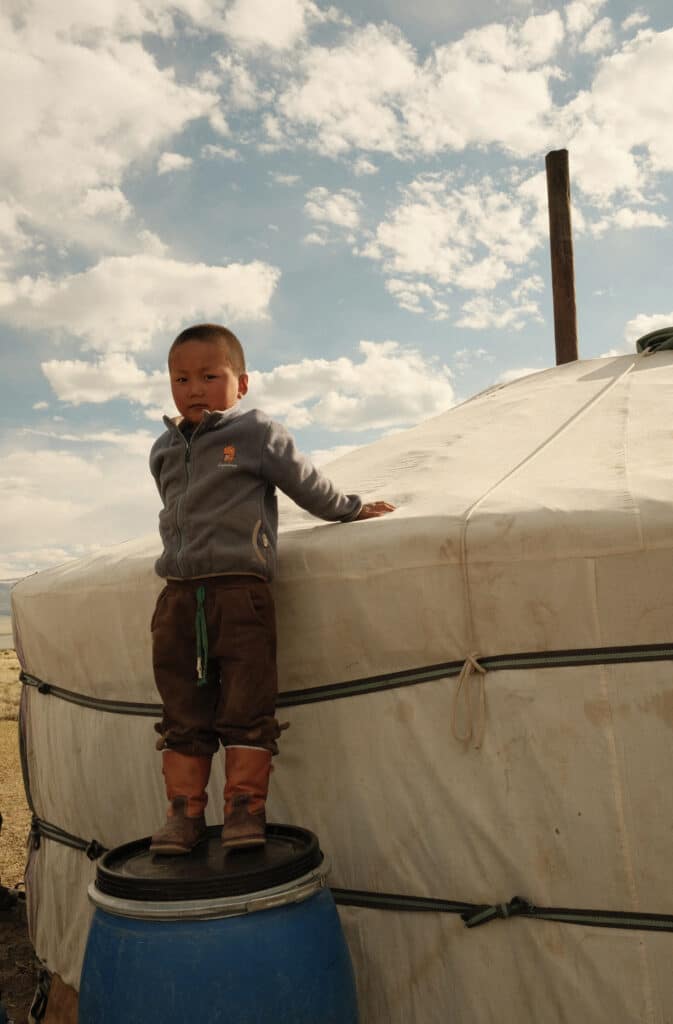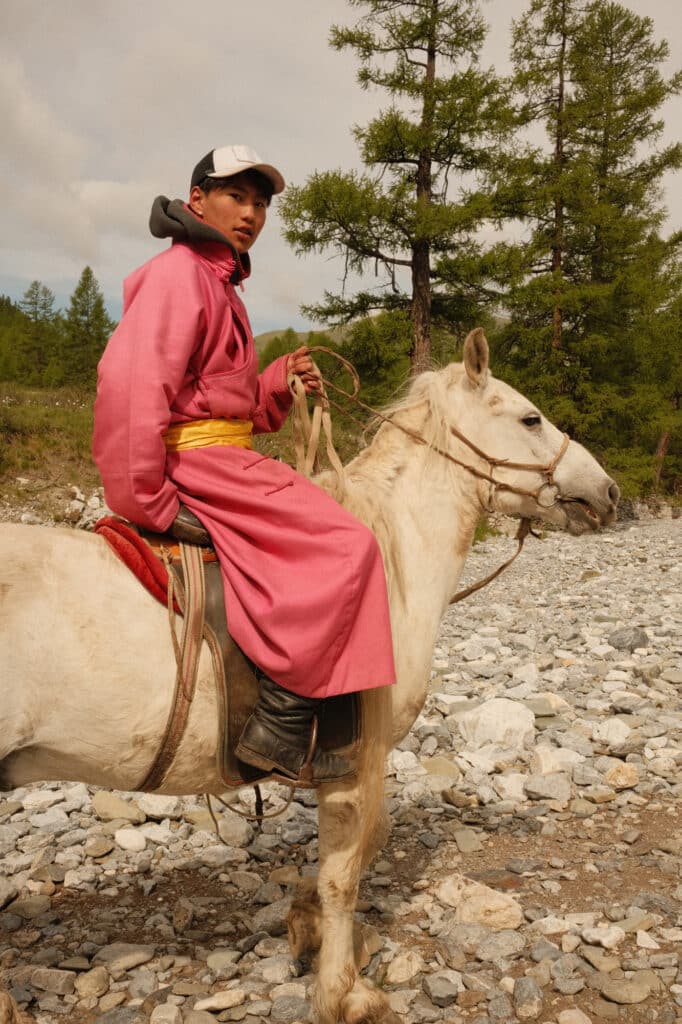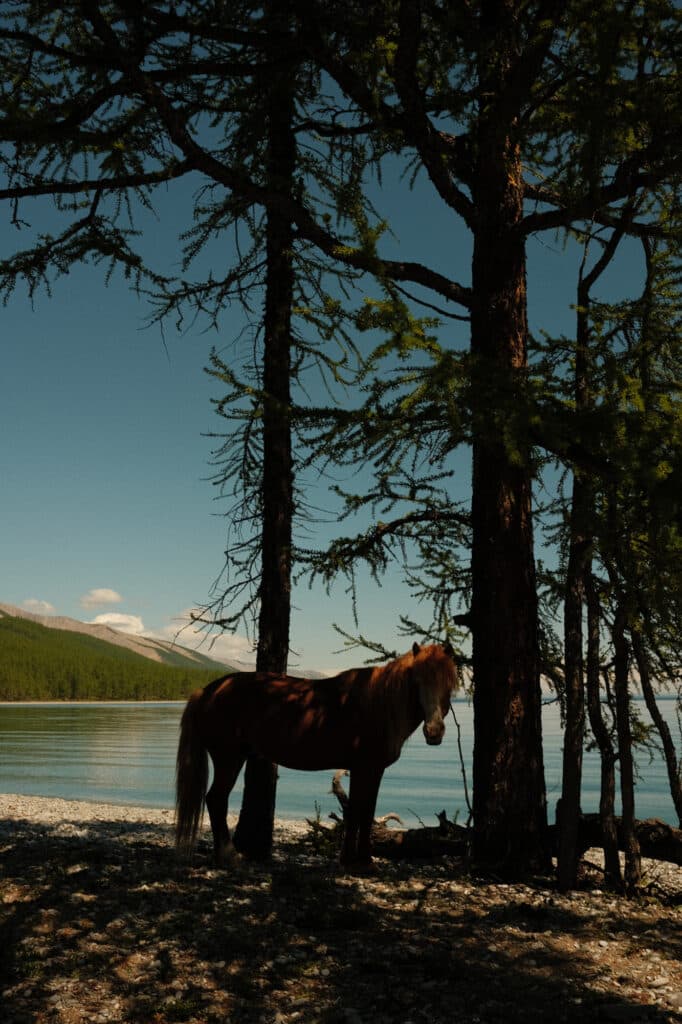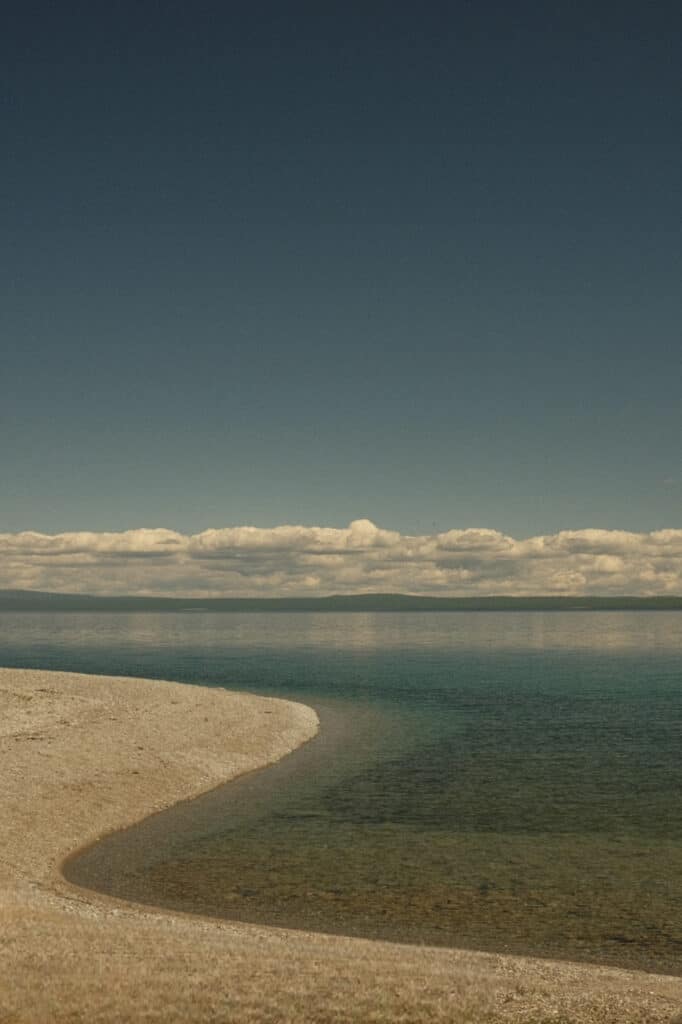It took me about six months before I could reflect on this trip to Mongolia. Until then, words felt insufficient to describe how precious and incredible the landscapes, family encounters, and new friendships made me feel. As I looked through the thousands of photographs I had taken at the end of 2024, the stories naturally resurfaced, making me ready to share them and, in some ways, try to pay tribute to those who shaped these memories.
I had long wanted to visit Mongolia, not just to travel but to immerse myself in the richness of its culture and understand the nuances of its traditions and beliefs. In November 2023, after months of research, I came across a British article about a photographer named Frédéric Lagrange, who had spent years traveling through Mongolia carrying his analog cameras. The way he captured his solitary journeys astonished me. The more I learned about his work, the more I felt drawn to discover this unique country for myself. I emailed him, and he responded, saying he was organizing a photography trip for May 2024 and that I was welcome to join.
Arrival in Mongolia
May 26, 2024. I opened my eyes and looked out the window, taking in the vast steppes of the country I was about to land in. I had planned two weeks with Frédéric and the team in western Mongolia, followed by a solo week at the Siberian border. In total, I would cover over 3,500 km, mostly by 4×4 or by foot to reach higher vantage points.
During my layover in Istanbul, a woman sitting next to me asked about our delayed flight. We started chatting, and she told me she was a chef from Ulaanbaatar based in Dublin, returning home to visit her family. She recommended that I visit Narantuul Market, a suburban bazaar she loved to explore whenever she was in town.
Upon arriving in Ulaanbaatar, I walked along one of the city’s main avenues and stopped by Dundgol Records. The founder welcomed me warmly as I browsed through a selection of international and Mongolian bands, spotting a few vinyls I hoped to buy before my return to France. I had unknowingly arrived on a special day: an annual celebration during which cars were banned from the main avenues. The streets were filled with music stages, families walking under the warm sun, and vendors selling ice cream. I stopped by Anjuna Book&Art Café before heading to Narantuul Market, where I spent a few hours capturing scenes of daily life.
At nightfall, I returned to my hotel, where I met Frédéric and the rest of the team. There were six of us photographers, most of whom had never met before. A local guide would accompany us, assisting with logistics and translations, along with three local drivers. Frédéric had spent months crafting an itinerary, one he had personally undertaken multiple times over the past decade.
The journey West begins
Traveling through Mongolia requires patience and flexibility, not just due to the vast distances but also because of unpredictable circumstances. Since COVID, domestic flights had been reduced from three to one per week, fluctuating depending on weather conditions and passenger demand. Unfortunately, a week before our departure, we learned that our flight to the west had been delayed, forcing us to spend an extra night in the capital.
We decided to use this extra time wisely and visited Hustai National Park Camp, located about two hours from Ulaanbaatar and home to the endangered Przewalski’s horses. We arrived late in the morning and wandered through the rolling hills, offering us a glimpse of Central Mongolia’s landscape. Nearby, herders guided their sheep close to our gers, the traditional Mongolian yurts where we’d be spending the night.
As I walked up a hill, I came across a basketball court and wondered why it was there, seemingly in the middle of nowhere. Later, I learned that basketball is the only solitary sport that locals can play on their own, which explained why I saw many more throughout our journey.
Before sunset, we drove through the park and stopped when we saw wild horses running freely. Rangers were monitoring their movements, and as we chatted with them, I captured some moments of shared laughter.
Into the Altai mountains
The next morning, we left early for our flight to Ulaangom, a city in the northwest near the Russian border. Home to 27,000 residents, it is one of Mongolia’s lowest-altitude settlements at 939 meters above sea level. As I walked through its streets, locals quickly noticed me; some amused, some smiling and posing as I tried to communicate with my very limited Mongolian.
The following day, we embarked on a five-hour drive, transitioning from paved roads to dirt tracks that eventually led us to Uureg Lake. This stretch marked the true beginning of our journey, gradually revealing the breathtaking Altai mountain range. We split into three different cars, each of us free to request stops whenever a particular scene caught our eye. The road was dusty, the air fresh, and the sky an uninterrupted blue, a signature of Mongolia.
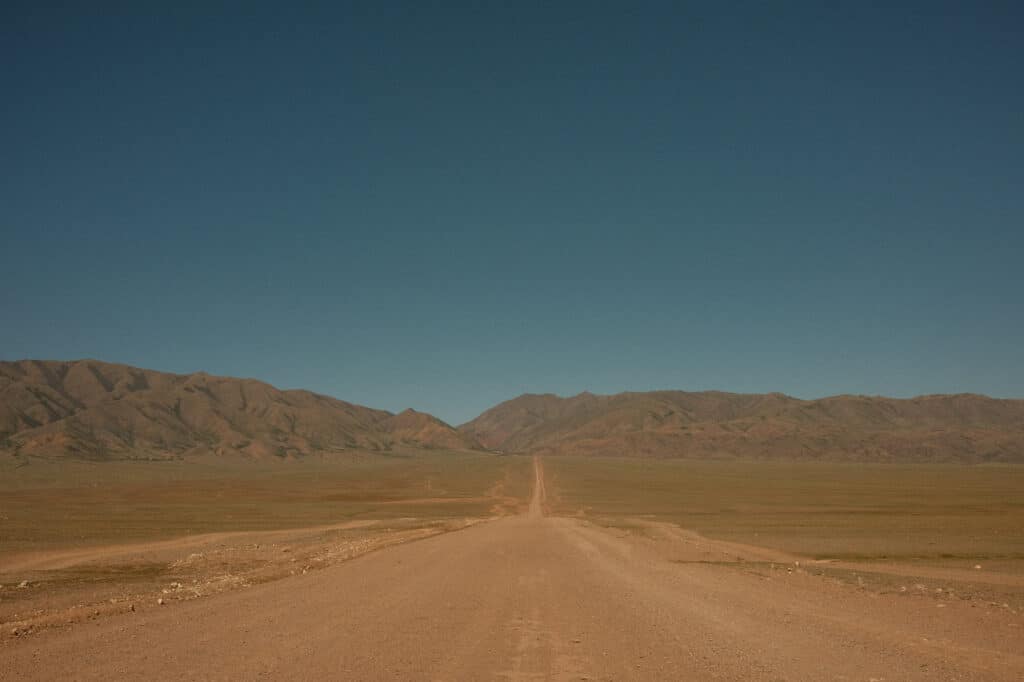
Late May is when nomadic families move to their summer pastures, bringing their animals and belongings for the season ahead. We encountered some of these families: some traveling by car, others on horseback, and stopped to admire their garments and exchange a few words.
One of the first families I met was sitting on the ground, having lunch, and they warmly invited me to join them for milk tea, a traditional drink made from yak or sheep milk mixed with salt and tea leaves. They also offered me dried cheese, or aaruul, while children played nearby, allowing me to capture fragments of their daily lives.
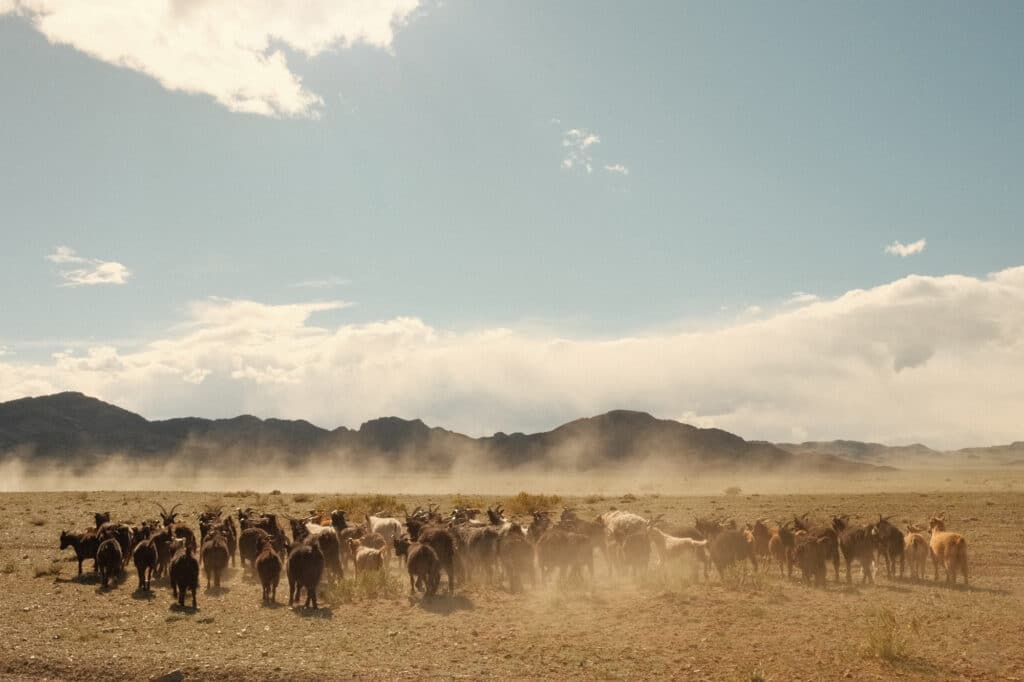
As we reached our camp for the next two nights, excitement could be felt through our group as we took in the beauty of Uureg Lake. The lake is known for its high salt concentration due to evaporation and lack of outflow. It stretches 19.5 km in length and 18 km in width, with a shoreline of 65.5 km. Several rivers, such as Tsagdul and Kharigiin, flow into its waters. Situated in a semi-desert region with arid vegetation reminiscent of the Gobi, the lake is home to threatened species like the swan goose and Pallas’s fish eagle. Red foxes and Pallas’s cats also inhabit the surrounding steppes.
As nomadic families arrived one after another to settle in, we had the rare privilege of capturing these moments. Most gers faced south, their wooden doors painted orange: a color symbolizing the sun and fire, two sacred elements in local culture. Above some doors, I noticed the ulzii, a Buddhist infinity knot, symbolizing the connection between humans and the universe.
I couldn’t help but wonder how families chose their seasonal locations. Did they pick a new place each summer, or was the land passed down through generations? Enkhdul, our guide, explained that each family returns to the same land every year, honoring their ancestors while ensuring their livestock enjoys fresher air, greener grass, and, give higher-quality milk and meat.
Mongolian hospitality and daily life
Hospitality lies at the heart of Mongolian culture. Families welcomed us warmly, making us feel like part of their own, allowing us to experience the intimacy of their homes. One of the photographers in our group, John, was eager to learn Mongolian phrases to communicate with locals. I tried as well, though with far less success. Still, families appreciated our efforts, often smiling at our attempts, making our interactions even more meaningful. One afternoon, as we drove through the landscape, we spotted a family trying to tame a stallion among a herd of horses. We stopped and carefully approached, witnessing one of the most breathtaking moments of our trip: dozens of horses running along the lake, the Altai Mountains towering unfolding in the background. Once the stallion was secured, the father of the family sat down to smoke a cigarette, while his wife walked toward us, leading her horse. They warmly invited us to visit their home the following day.
At this time of year, the sun sets around 8:30 p.m., allowing us to watch the golden light stretching across the vast horizon. It was one of those rare moments that made us feel like the luckiest people on earth.
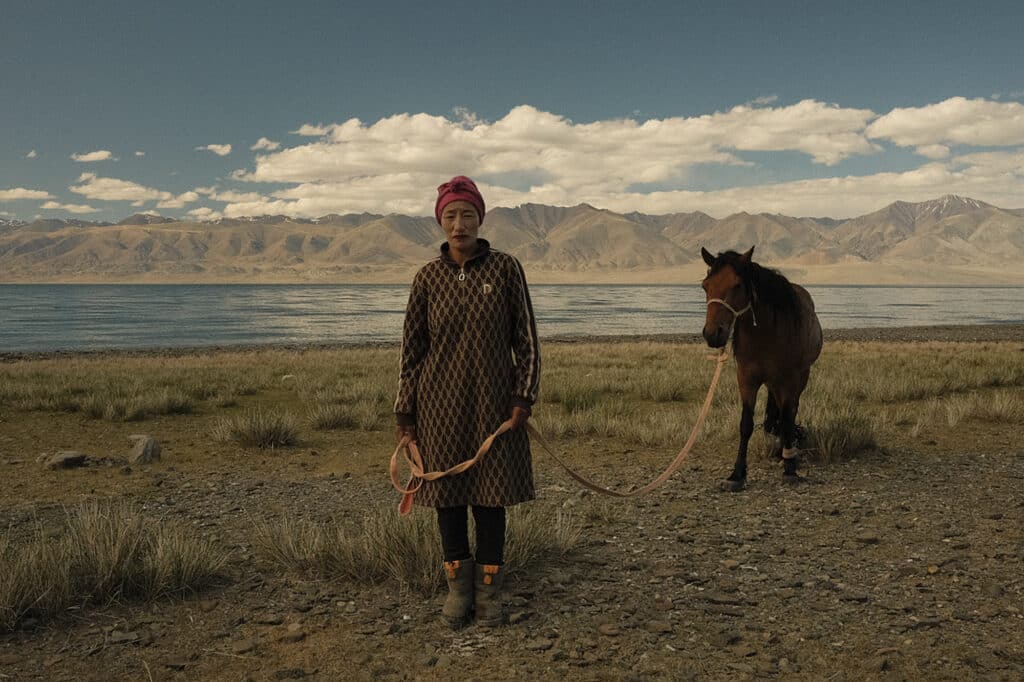
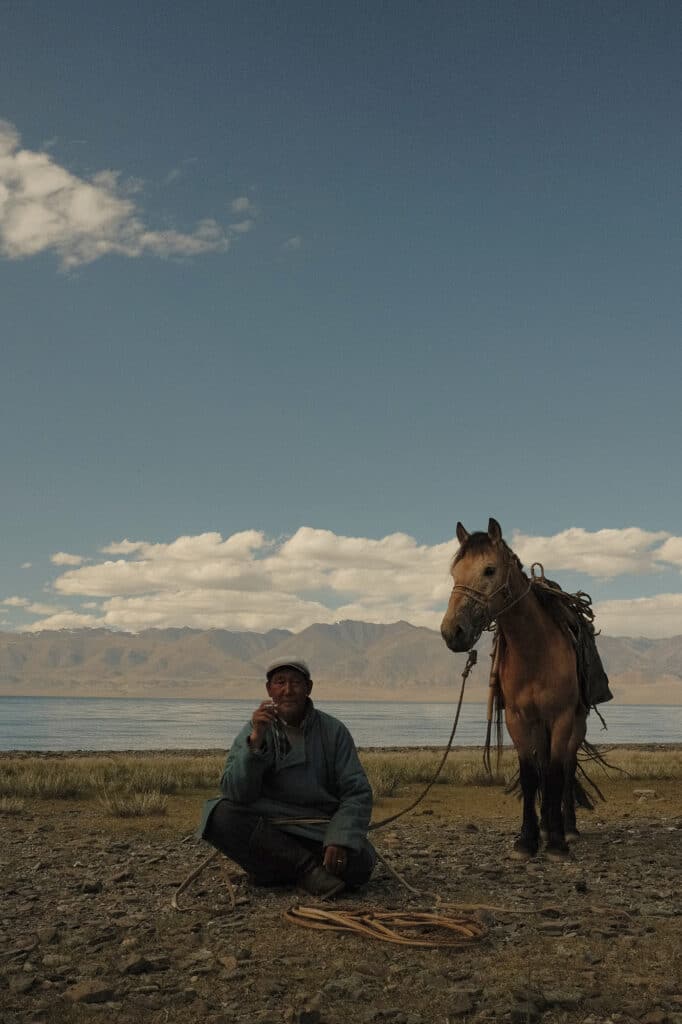
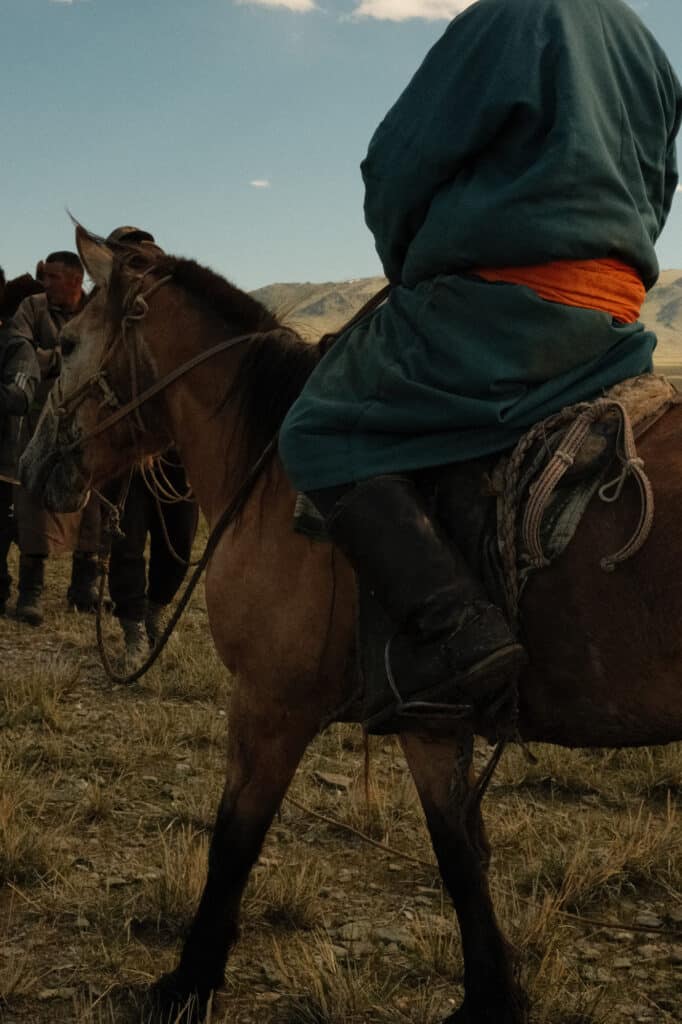
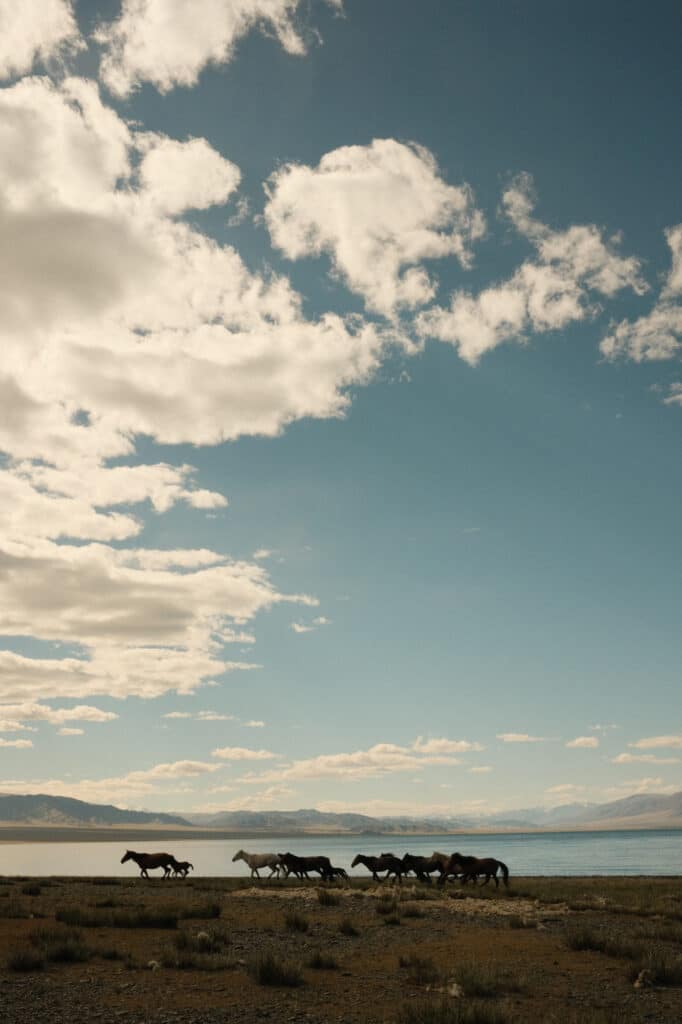
The next morning, we visited the family who had invited us, spending time inside their ger and learning about their lives. There are well-understood customs when entering a Mongolian ger: one must always enter from the left, greet the eldest person first, and never sit directly in front of the main door. We accepted all the food offered with our right hands, careful never to throw anything into the fire or touch the foundation of the ger, as both acts would be considered disrespectful.
We also carried small candies to offer the children as a way of appreciation for their hospitality. Their young daughter ran around joyfully, carrying newborn sheep in her arms, while the grandmother and mother prepared milk tea and traditional snacks: bin (fried bread), boortsog (cookies), and gambir (fried cake), as part of a warm welcome. After some time, we set off again, driving around the lake and stopping for lunch before taking a short hike up a nearby mountain. A few Pallas’s fish eagles circled above, watching our every move, seemingly waiting for an opportunity to snatch our food.
On our way back, we came across another family just settling into their summer camp, their Russian car appearing to have broken down. In Western Mongolia, most cars come from Russia and are valued for their durability and the ease of replacing parts. In these remote areas, where extreme weather conditions dictate survival, they are indispensable.
The next day, we prepared for an eight-hour drive toward the city of Olgii, traveling through rugged mountain roads as we ventured deeper into the Altai range. At times, we drove for hours without encountering another person. Occasionally, we stopped at small settlements where people lived in near-total isolation. Yet each time, we were greeted with warmth, welcomed inside for milk tea as though we were long-expected guests.
The vastness of the landscape, combined with the openness of the people, made this part of the journey feel even more profound. By evening, we reached Olgii, where locals were setting up for a festival featuring live music performances. After a long day of travel, we first sat down for a traditional Mongolian dinner of buuz— mutton-filled dumplings, before heading out to join the festivities, embracing the lively atmosphere that filled the night.
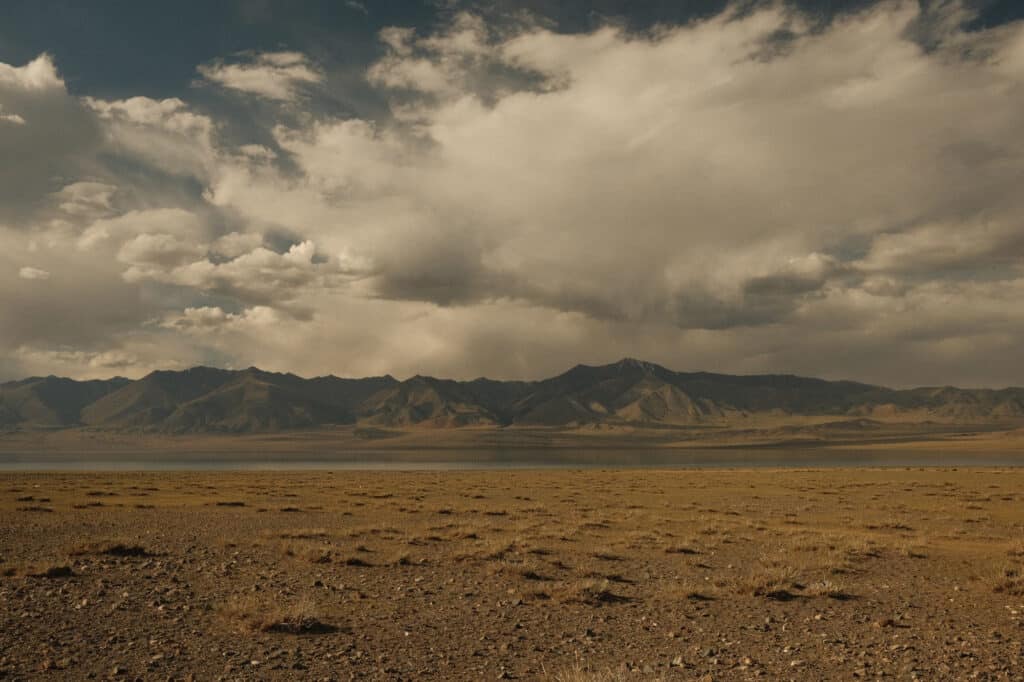
Into the heart of Altai Tavan Bogd National Park
Early in the morning, I wandered through town, capturing its quiet essence before we set off on a six-hour drive to Altai Tavan Bogd National Park. Located in a restricted area in western Mongolia, this park borders both China and Russia. As we ventured deeper into a more alpine landscape, the roads became increasingly stunning. We passed through a few villages, where locals watched us with curiosity, likely wondering how we had ended up in such a remote part of the country.
At this time of year, children were returning to their countryside homes. Most families who live in these isolated regions year-round send their children to stay with relatives in cities so they can attend school. The contrast between the urban and rural lifestyles here felt particularly striking.
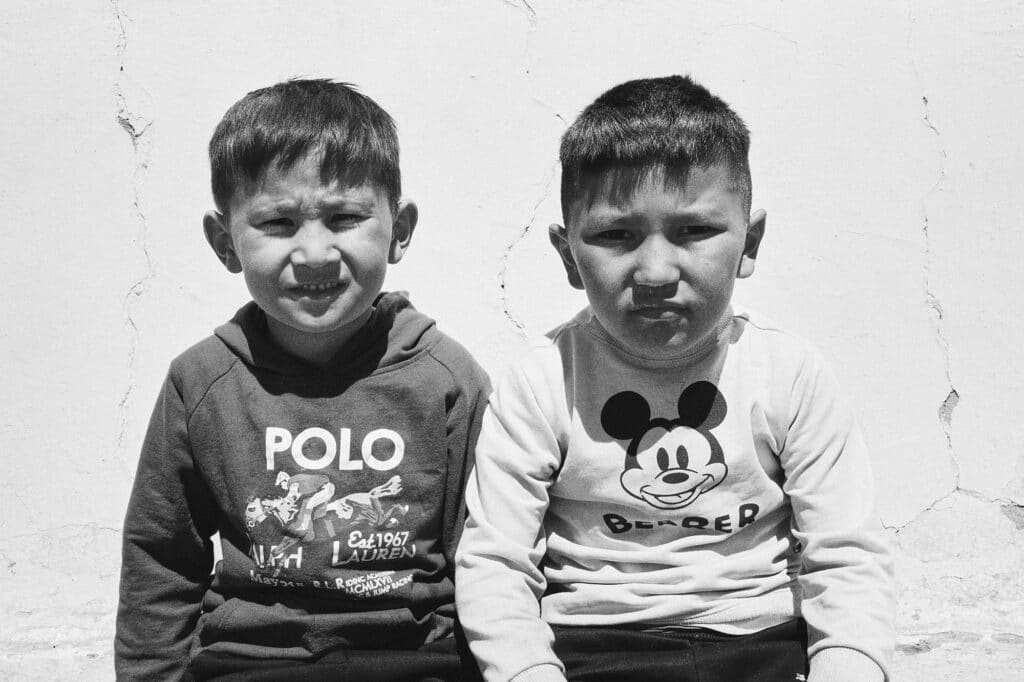
I will never forget the feeling as we transitioned from the vast, sandy roads we had been driving on for hours to the highest entry point of Altai Tavan Bogd National Park. The landscape was otherworldly, and for a moment, it felt truly surreal. Frédéric had arranged for the park ranger to set up gers exclusively for our group at an altitude of 2,300 meters.

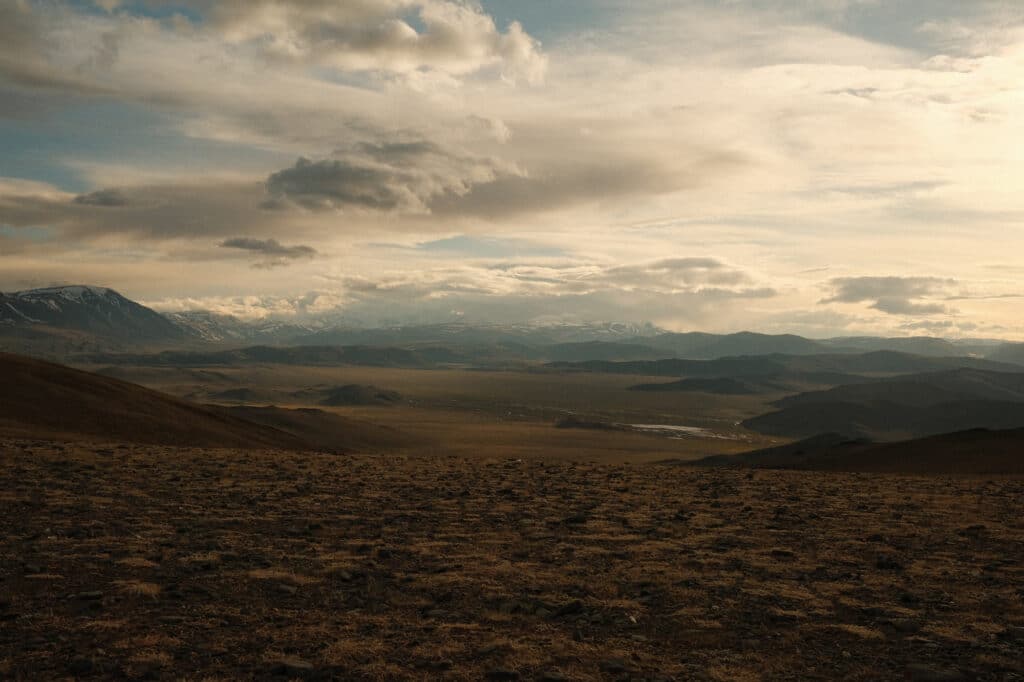
That night, I barely slept—frozen in my sleeping bag, which was entirely inadequate for the cold being. The women in our group shared one ger, while the men stayed in another. In the middle of the night, it’s up to the ranger to come and stoke the fire, the only source of warmth in our shelter. Given the scarcity of trees, fuel was made from dried animal dung. At first, the smell was noticeable, but after a while, we barely noticed it anymore. The ranger’s wife prepared traditional meals for us each morning and evening, serving bantan (meat porridge) and tsuivan (handmade noodles stir-fried with mutton and onions).
A hike to the glacier
We set off on a hike toward the Tavan Bogd Glacier, with breathtaking views unfolding before us. As we climbed one of the summits, we came across ovoos—sacred stone cairns adorned with khadags, long silk scarves in five distinct colors: blue, white, yellow, green, and red. Each color holds symbolic meaning, representing the sky, purity, earth, water, and fire. In Mongolia, it is customary to stop at these ovoos, walk around them three times in a clockwise direction, and make a prayer or wish. The most respectful offering is a khadag, though leaving a small stone is also a way to show reverence.
Occasionally, we saw sheep and horses wearing blue khadags tied around their necks, a sign that they were sacred and could neither be slaughtered nor consumed. As I walked further toward the glacier, at an altitude of around 3,000 meters, I found myself completely alone. The vastness of the landscape and the raw beauty surrounding me made me feel incredibly small yet profoundly grateful. I lay on the grass, amazed at the scenery, trying to capture the feeling in a single image.

A sudden change in the landscape
The next morning, I woke up frozen again, but this time, when I stepped outside the ger, the entire landscape had transformed. Snow had fallen overnight, blanketing the mountains in white and reshaping the scenery in a way that felt almost surreal. With this unexpected snowfall, our plans quickly changed. If we didn’t leave early, the roads would soon become impassable. And yet, as I stood there, taking in the untouched beauty of this moment, all I could think about was how much my heart was filled with joy. I would have given anything to extend this moment, to remain surrounded by the silence, the immensity, the overwhelming beauty of this place.
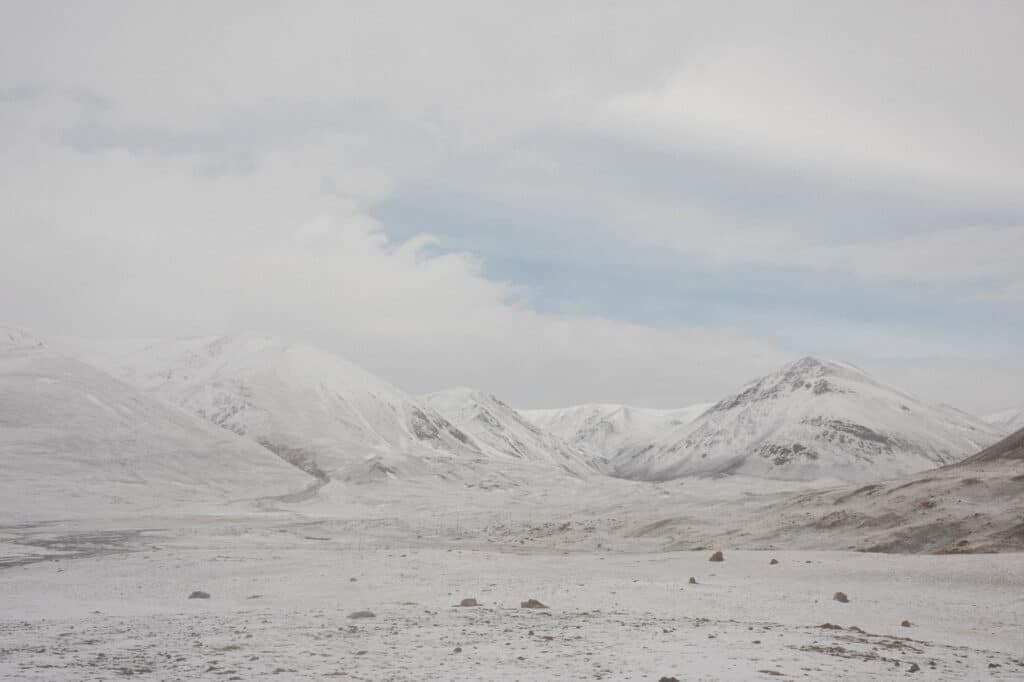
A return to Olgii and a Kazakh celebration
We drove back to Olgii, where I took the opportunity to handwash my clothes, having run out of socks and underwear. Given the humidity of the room, they never fully dried, so I packed them into a bag, planning to dry them later by the fireplace in the Kazakh yurt where we would be staying that night.
On the way, we passed Tolbo Lake and hiked up a steep mountain to reach the highest viewpoint. The reflection of the deep blue water was mesmerizing. I sat at the mountain’s peak, looking down at the vast dirt road we had traveled. The wind had already erased trace of our journey, parts of our car tracks had disappeared into the sand.
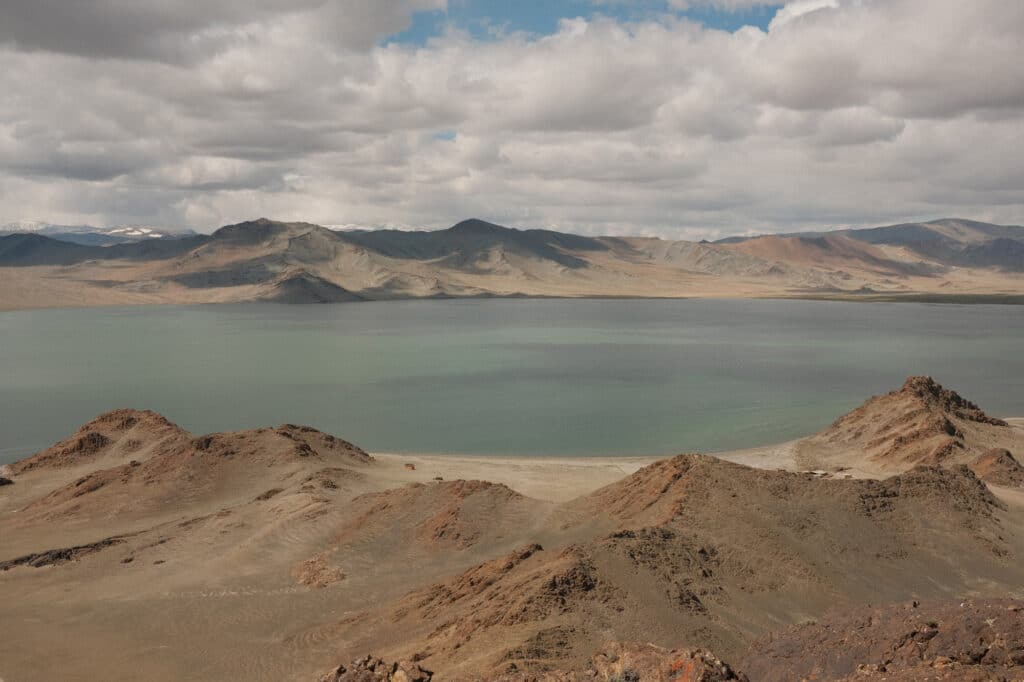
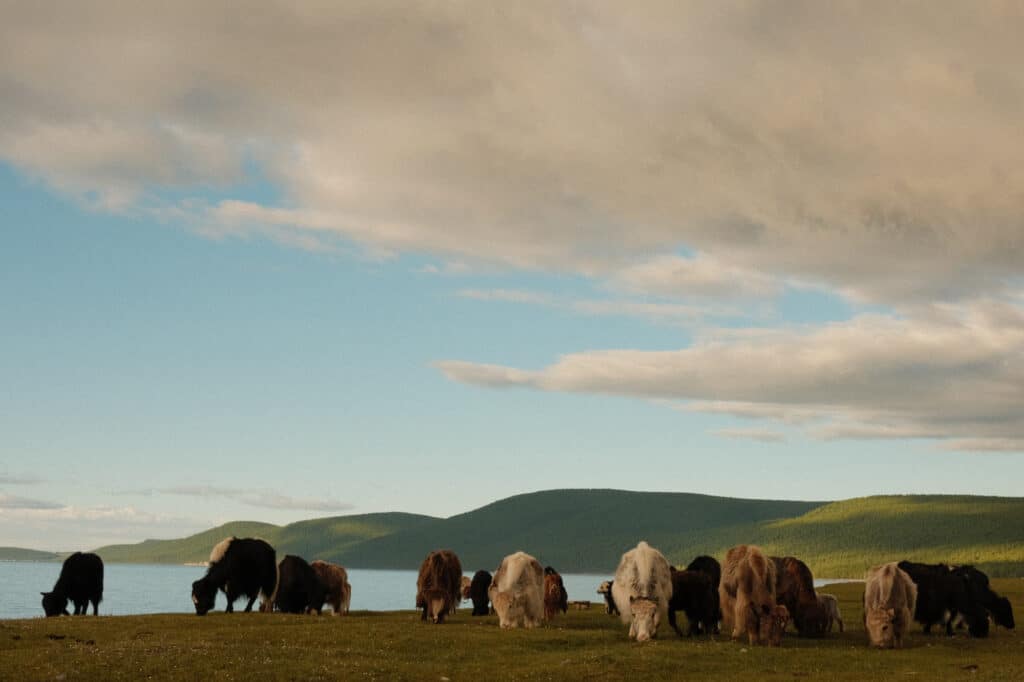
After another three hours on the road, we arrived at the home of Dalaikhan, a renowned eagle hunter and a friend of Frédéric. He welcomed us for a traditional Kazakh evening, where his family prepared a feast and invited friends and family neighbors to join. We shared rounds of vodka, enjoying a lively, festive atmosphere. It was probably one of the most touching evenings of the trip. They made us feel at home, sang local songs, and shared laughter as if we had known each other for years. June is not the eagle hunting season, as the birds are shedding their feathers. Still, we had the rare opportunity to get close to them, admiring their powerful presence up close.
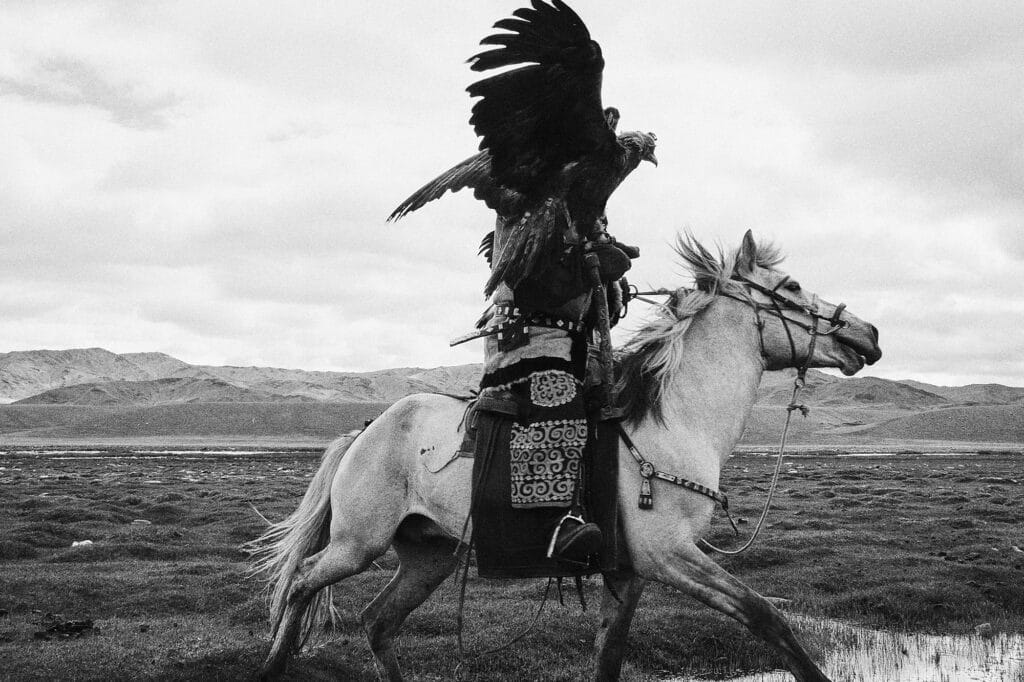
Journey toward the Gobi
After a short night, we departed early for Tsat Uul Mountain, taking our time as we followed winding roads. Along the way, we often spotted wild horses running beside us, a sight that had become both familiar and awe-inspiring. We drove for about five hours before reaching the city of Khovd, where we spent the night before continuing our journey toward the southwestern edge of the Gobi Desert.
Our first stop was Jargalan Uul Mountain, followed by Dōrgōn Nuur Lake. As we drove deeper into the desert, we left the Altai Mountains behind, entering a vast and nearly uninhabited landscape. The terrain shifted dramatically: hard sand stretched endlessly ahead of us, just meters from the lake’s edge. The intense sun beat down as I wandered through the dunes, observing the contrast between the cold waters and the dry, barren earth. The whole scene felt surreal, like stepping into another world.
A final stop in Khövsgöl
The next day, we flew back to Ulaanbaatar, where we spent the evening at a local jazz night, enjoying the company of each other one last time. The following morning, I took a 7 a.m. bus for a long, 13-hour journey to Mörön, where a relative of our local guide had offered to host me. After the exhausting trip, she welcomed me with a homemade meal of buuz— steamed mutton dumplings, a much-needed comfort after the long ride.
That evening, we sat together, exchanging stories. She shared personal memories of her family, showing me old photographs and recounting how they had lived in Mörön for generations, facing extreme weather conditions with resilience. Yet, despite the challenges, she spoke with immense pride about the beauty of their land and their enduring way of life.
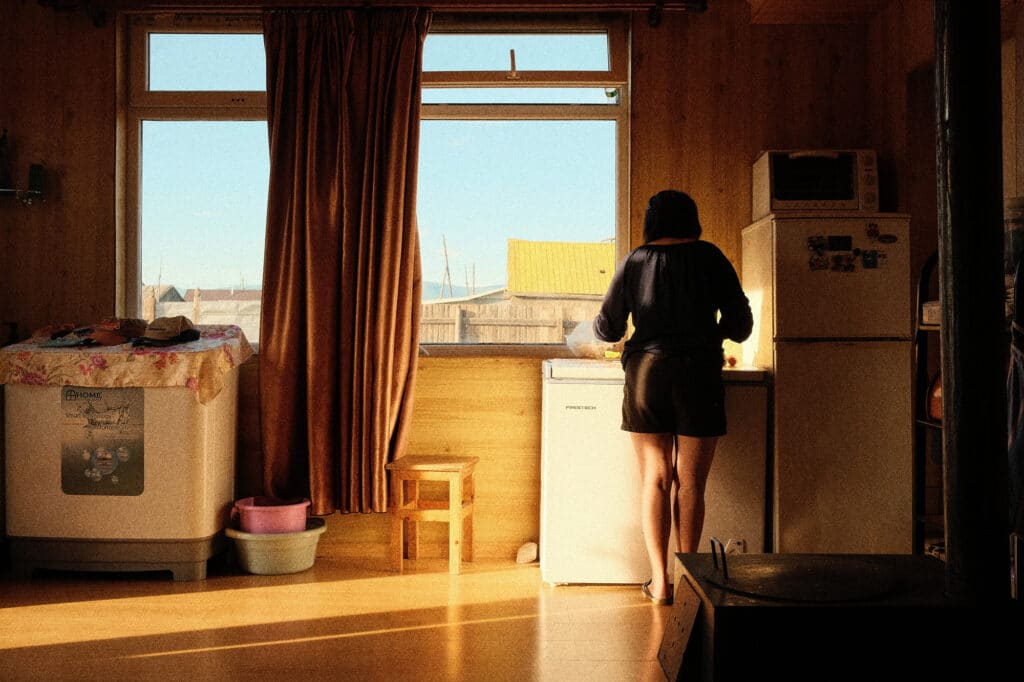
The next morning, she was up at 5 a.m., preparing meat soup, while her husband turned on the TV to watch a 90s Mongolian film—an ordinary yet intimate moment that made me feel even more connected to their daily life. Mörön is the capital of Khövsgöl Province, located in northern Mongolia. It is home to around 28,000 residents and sits just a few hours away from the notorious Lake Khövsgöl, nestled at the southern edge of the Siberian Taiga. At 1,645 meters above sea level, the lake is the largest and deepest in Mongolia, stretching 125 kilometers from north to south and reaching a depth of 262 meters. Formed by volcanic activity, its crystal-clear blue waters are among the purest in the world, untouched by pollution and preserved by its glacial origins.
I had come to this part of the country not only to witness its vast beauty but also to meet the Tsaatan people, also known as the reindeer herders. Originally from the Darhat Valley, they are one of the last remaining nomadic groups in the world who rely on reindeer for transport, food, clothing, and shelter, while also preserving their own distinct dialect. I had prepared for a three-day horseback journey to reach the Tsaatan families living in the western part of the valley.
Unfortunately, the passage had been closed due to severe weather conditions. Still determined, I sought out a Tsaatan community that had traveled hundreds of kilometers to reach the lake for the summer season. Nearby, additional local families were settling in, their children running freely, many of them returning from the city after the school year had ended.

To make the most of my time, I set out on a day hike in Khoridol Saridag National Park, where I met local herders riding through the valley. They warmly allowed me to take their portraits, adding another precious moment to my journey.
A farewell to Mongolia
A few days later, I returned to Mörön, where I caught a flight back to Ulaanbaatar. Before leaving, I purchased some of the vinyl records I had set aside earlier in my trip, attended one final jazz session, and reflected on the past few weeks. As I boarded my flight home, my head was full of memories, of landscapes that stretched beyond imagination, of a culture that embraced me with warmth, and of a way of life I had not only come to admire but had truly fallen in love with.
Text and photographs by Sarah Carrier. More information is available on her website or her instagram.


